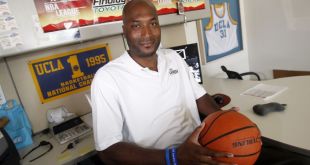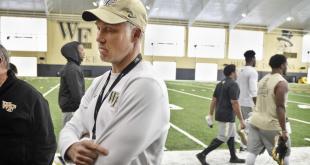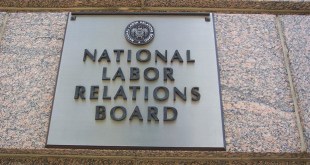In a relatively unsurprising decision, the Supreme Court has denied petitions for both the NCAA and Ed O’Bannon in one of the landmark cases for the collegiate model. SCOTUS typically grants a writ of certiorari in less than 2% of all cases that request, and the age-old NCAA amateurism issue will not pique their interest this time. Overall, while both sides petitioned for cert, this is a pretty favorable result for the NCAA.
What does this mean?
First and foremost, this means that the O’Bannon case done.[i] The Supreme Court won’t hear it, so the Ninth Circuit decision is currently the legal status quo on the matter, and will come into play in the several pending lawsuits the NCAA faces (looking at you, Kessler).[ii] Both sides argued for the last six years over scholarships, name, image, and likeness (NIL) rights, with little actual change occurring. One of the biggest errors in perception in O’Bannon is the outcome – the decision merely states that the absolute prohibitions and limitations on scholarship money runs afoul of antitrust regulation. Nothing in the decision says schools have to actually do these things, just that the NCAA can’t prevent the schools from doing them if they want to (well hello there, slightly freer market competition).
While the Ninth Circuit affirmed the District Court’s decision that scholarships could not be limited to less than the full cost of attendance, this rule change was already in the works from within the NCAA and the Power 5 conferences anyway. The definition of a “full grant-in-aid” (full scholarship) was updated in 2015 to be up to the full cost of attendance, a federally calculated amount at each school, based on a number of factors, to quantify the total cost of actually attending the school for any given semester/year. By the time the September 30, 2015 decision came out, this new rule in Division I had been effective for two months. The current definition of a full scholarship can’t go any higher anyway, because federal financial aid legislation won’t permit a student from receiving over the cost of attendance anyway.[iii]
Between the Ninth Circuit and recent NCAA rule changes, the scholarship definition issue could very well have exhausted legal remedies at this point. The main thing accomplished by the Ninth Circuit decision at this point is that the NCAA can’t go back and lower the full scholarship amount (the majority even addresses this in a footnote), but it is fairly unlikely that the NCAA would revert to old rule anyway. The application of this decision will actually be more interesting at the Division II level, which still limits the full scholarship to “tuition and fees, room and board, required course-related books and required course-related supplies.”[iv] This will either lead to a very quick Division II scholarship lawsuit, or an upcoming rule change at that level as well.
The NIL issue is a bit stickier. In its 2015 decision, the Ninth Circuit discussed the fact the court’s function is not “to tweak every market restraint that the court believes could be improved” or to “to make marginal adjustments to broadly reasonable market restraints.” While considering the NIL issue, the majority really dissected the NCAA’s previous reliance on the Board of Regents case (that the NCAA lost), and the NCAA’s underlying arguments for amateurism.
The NCAA was never exempt from antitrust legislation, they just always had fantastic dicta from the Supreme Court to fall back on. Even in a losing effort, Board of Regents may as well have been written by an NCAA lawyer, trying to plan for future litigation. The Ninth Circuit softens some of that pro-NCAA language from that case, and continues to say that the procompetitive purposes of amateurism, while a valid NCAA argument, must be analyzed and proven in each instance. The Ninth Circuit still gave the NCAA fairly strong language in which to formulate pro-amateurism/student-athlete arguments going forward. Potentially the best dicta from the Ninth Circuit decision is Judge Bybee’s line:
The difference between offering student-athletes education-related compensation and offering them cash sums untethered to educational expenses is not minor; it is a quantum leap.
This could frame any Rule of Reason analysis on NCAA compensation and amateurism issue in future cases. The Ninth Circuit squarely places the emphasis on whether any payments made or any prohibitions on payments are related to the student-athletes’ education, or whether it is cold hard cash that they can have for whatever purpose.
Lack of certiorari puts the NCAA in a similar legal position that they were in following Board of Regents. The NCAA has a persuasive authority in the Ninth Circuit providing good language to fall back on regarding payments to student-athletes and how antitrust analysis may now approach such cases. New cases will need to take care to argue how any compensation is educationally tethered, or risk not proving that the NCAA’s restraints are overly restrictive. The circuit merely reaffirms that any NCAA argument must be analyzed under the Rule of Reason, giving NCAA lawyers slightly more work to do than just shouting Board of Regents. For such a high-profile, extended antitrust lawsuit, the O’Bannon decision leaves the NCAA remarkably untouched, and may have even given the organization some added firepower to argue in favor of the collegiate model and amateurism going forward.
[i] In just a matter of days, two of the longest running sports law cases are over – O’Bannon and Deflategate.
[ii] For a full recap on the Ninth Circuit decision, see our analysis here.
[iii] Some exceptions exist, including Pell Grants and military-based funding, but none of the exceptions fall under what the school can provide.
[iv] NCAA Division II Bylaw 15.02.5.
[v] O’Bannon v. NCAA, pg. 54-55.
 The Sports Esquires Putting Sports on Trial
The Sports Esquires Putting Sports on Trial





One comment
Pingback: Sports Law Links - The Sports Esquires